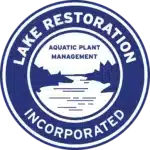Elodea Control: Recognizing and Treating the Aquatic Plant Elodea
Also known as American or Canadian Waterweed or Pondweed, Elodea is a popular aquarium plant native to North America. Elodea’s dark green oval-shaped leaves grow in whorls of three around a central stem. The flowers of Elodea have three white petals with a waxy coating that make them float, and the flower is the only part of the otherwise submerged weed that can be seen above the surface of the water. The plant is often confused with Hydrilla, which has similar whorled leaf patterns, but Hydrilla leaves grow in groupings of 2 to 8. Also, the Hydrilla plant does not flower as the Elodea does.
As with other submerged aquatic plants, Elodea provides a habitat for many invertebrates that fish and other animals eat. Unfortunately, Elodea is prone to growing in thick, closed structures that aren’t compatible dwellings for larger fish or animals. It can quickly take over areas where water is less than 10 feet deep and near stream inlets, where it commonly thrives. Interestingly, this plant also has the ability to grow free floating and detached from any root system, making Elodea control and treatment difficult, moreso than other aquatic plants.
Though a popular aquarium plant, the Elodea has been declared an invasive species and is illegal to sell in the states of Oregon, Alabama, South Carolina, and Washington. Aquarium owners are advised to be very careful with Elodea, as it can turn quickly from a harmless hobby plant into an environmental hazard if introduced to ponds and lakes, necessitating control and treatment measures.
We at Lake Restoration recommend our RestoreAccess® Ultra or RestoreAccess®, both of which provide great control for other submerged weeds as well. Using Hydrothol Granular applied evenly early in the day under calm, sunny conditions at 60F or higher will help you keep your waterways clear and beautiful as well. And the Muck-Eater, RestoreAccess® Ultra G will control a wide range of aquatic weeds as well as control your Elodea problems.
Lake Restoration reminds you to always make sure you check with your local DNR to see if permits are required for the removal of any aquatic weeds.
